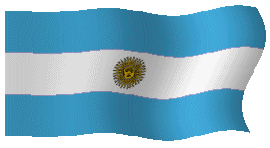
B"H
Jewish  Tours
Tours
 Buenos Aires, Argentina
Buenos Aires, Argentina
ARGENTINA, South American Federal Republic, general population (2004) 39,150,000; Jewish population 190,000.
World War I caused a number of changes in the structure of the Jewish community of Argentina that were further augmented by a later wave of immigration. Many and varied cultural organizations, such as the Argentinean branch of *YIVO (1929), which established a central Jewish library and archives (dedicated mainly to the history of the community), were founded. A specific type of cultural activity was evidenced by the foundation of Landsmanshaftn (organizations of immigrants established according to countries and cities of origin) to aid the newcomers in their initial integration.
The outstanding characteristic of cultural life was that it was a microcosmic continuation of East European culture. Numerous organizations were built mainly around the Yiddish language and culture (such as the society of Jewish writers and journalists named after H.D. Nomberg, the Kultur Kongres, A. Zygielbojm Gezelshaft far Kultur un Hilf, Ringelblum Kultur-Tsenter, and Ratsionalistishe Gezelshaft). Cultural activity was also supported by circles that identified themselves with Bolshevism. On the other hand, activities in Hebrew were very limited. The first attempts to hold activities in Hebrew were made in 1911, when the organization Doverei Sefat-Ever was founded. In 1921 the first Hebrew periodical, Ha-Bimah ha-Ivrit, edited first by J.L. Gorelik and later by Tuvia Olesker, was published in Buenos Aires. Others soon followed, and in 1938 a Hebrew monthly, Darom, was founded by the Histadrut ha-Ivrit and has been published regularly until the 1970s.
Weeklies and monthlies in Spanish made their first appearance as early as 1911. Juventud was the first, followed by El Israelita Argentino (1913) and Vida Nuestra (1919). In 1917 the Spanish-language monthly Israel was established by a Moroccan Jew, Samuel A. Levi, and served mainly Sephardim. Mundo Israelita made its first appearance in 1923, followed by La Luz, a bi-monthly, edited first by David Elnecave and subsequently by his son Nissim and his grandson David, which also addressed itself to Sephardim, and literary periodicals such as Shriftn and Davke, devoted mainly to Jewish philosophy.
|
Visite nuestro sitio/Visit our home page: |